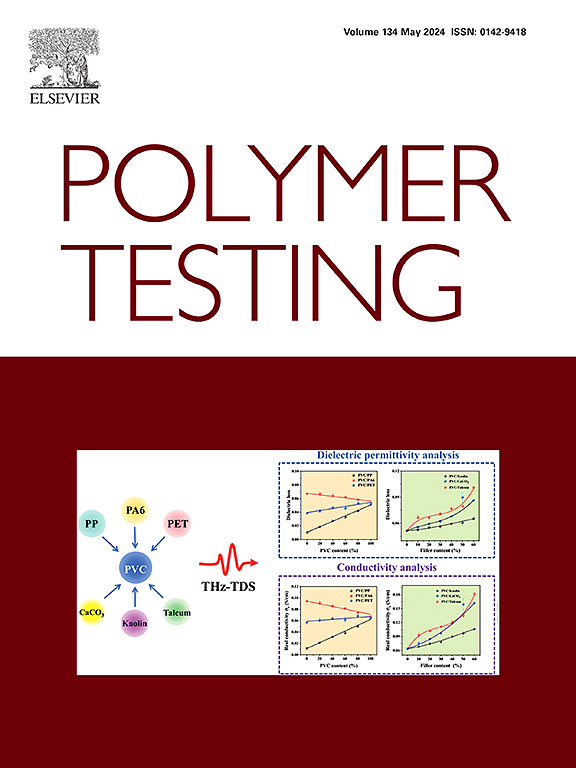3D/4D printed bio-composites reinforced by bamboo charcoal and continuous flax fibres for superior mechanical strength, flame retardancy and recoverability
IF 5
2区 材料科学
Q1 MATERIALS SCIENCE, CHARACTERIZATION & TESTING
引用次数: 0
Abstract
This study explores development and 3D/4D printing of environmentally friendly bio-composites with enhanced mechanical properties, flame retardancy, and shape memory capabilities. Composite filaments were created by incorporating polylactic acid (PLA) with bamboo charcoal (BC) and then printed using a modified printer equipped with a dual-feed system to accommodate both PLA/BC filaments and continuous flax fibres (CFF). SEM revealed strong fibre-matrix bonding with minimal voids, indicating good interfacial adhesion. Bio-composite properties were characterised through DMA, tensile, three-point bending, flammability, and shape-memory effect tests. Adding 3 wt% BC and CFF significantly increased the tensile strength by 248 % and the flexural strength by 207 % compared to pure PLA. Flame retardancy properties were notably improved, with a 50 % reduction in the burning rate, and underwriters’ laboratories (UL-94) rate and limiting oxygen index (LOI) reached to V-1 rating and 36.8%vol, respectively. DMA tests showed an increase in storage modulus, indicating improved stiffness. Shape memory tests under cold/hot programming protocols demonstrated efficient shape fixation with shape recovery ratios reaching up to 98.9 % for pure PLA and 89 % for PLA/BC/CFF for hot programming. Finally, a conceptual meta-bio-composite was 4D printed, showcasing key achievements such as quasi-zero stiffness, constant force behaviour, enhanced energy absorption/dissipation, and excellent recoverability and reusability. This highlights their potential for applications requiring durability, safety, comfort, and sustainability in sectors such as automotive, aerospace, logistics, construction, and furniture.
求助全文
约1分钟内获得全文
求助全文
来源期刊

Polymer Testing
工程技术-材料科学:表征与测试
CiteScore
10.70
自引率
5.90%
发文量
328
审稿时长
44 days
期刊介绍:
Polymer Testing focuses on the testing, analysis and characterization of polymer materials, including both synthetic and natural or biobased polymers. Novel testing methods and the testing of novel polymeric materials in bulk, solution and dispersion is covered. In addition, we welcome the submission of the testing of polymeric materials for a wide range of applications and industrial products as well as nanoscale characterization.
The scope includes but is not limited to the following main topics:
Novel testing methods and Chemical analysis
• mechanical, thermal, electrical, chemical, imaging, spectroscopy, scattering and rheology
Physical properties and behaviour of novel polymer systems
• nanoscale properties, morphology, transport properties
Degradation and recycling of polymeric materials when combined with novel testing or characterization methods
• degradation, biodegradation, ageing and fire retardancy
Modelling and Simulation work will be only considered when it is linked to new or previously published experimental results.
 求助内容:
求助内容: 应助结果提醒方式:
应助结果提醒方式:


